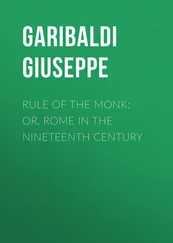Jules Verne - Celebrated Travels and Travellers, Part 3. The Great Explorers of the Nineteenth Century
Здесь есть возможность читать онлайн «Jules Verne - Celebrated Travels and Travellers, Part 3. The Great Explorers of the Nineteenth Century» — ознакомительный отрывок электронной книги совершенно бесплатно, а после прочтения отрывка купить полную версию. В некоторых случаях можно слушать аудио, скачать через торрент в формате fb2 и присутствует краткое содержание. Жанр: foreign_language, foreign_prose, на английском языке. Описание произведения, (предисловие) а так же отзывы посетителей доступны на портале библиотеки ЛибКат.
- Название:Celebrated Travels and Travellers, Part 3. The Great Explorers of the Nineteenth Century
- Автор:
- Жанр:
- Год:неизвестен
- ISBN:нет данных
- Рейтинг книги:5 / 5. Голосов: 1
-
Избранное:Добавить в избранное
- Отзывы:
-
Ваша оценка:
- 100
- 1
- 2
- 3
- 4
- 5
Celebrated Travels and Travellers, Part 3. The Great Explorers of the Nineteenth Century: краткое содержание, описание и аннотация
Предлагаем к чтению аннотацию, описание, краткое содержание или предисловие (зависит от того, что написал сам автор книги «Celebrated Travels and Travellers, Part 3. The Great Explorers of the Nineteenth Century»). Если вы не нашли необходимую информацию о книге — напишите в комментариях, мы постараемся отыскать её.
Celebrated Travels and Travellers, Part 3. The Great Explorers of the Nineteenth Century — читать онлайн ознакомительный отрывок
Ниже представлен текст книги, разбитый по страницам. Система сохранения места последней прочитанной страницы, позволяет с удобством читать онлайн бесплатно книгу «Celebrated Travels and Travellers, Part 3. The Great Explorers of the Nineteenth Century», без необходимости каждый раз заново искать на чём Вы остановились. Поставьте закладку, и сможете в любой момент перейти на страницу, на которой закончили чтение.
Интервал:
Закладка:
From Seetzen's description, Dscherrasch would appear to be identical with the ancient Gerasa, a town which up to that time had been erroneously placed on the maps.
The traveller crossed Gerka – the Jabok of Jewish history – which forms the northern boundary of the country of the Ammonites, and penetrated into the district of El-Belka, formerly a flourishing country, but which he found uncultivated and barren, with but one small town, Szalt, formerly known as Amathus. Afterwards Seetzen visited Amman, a town which, under the name of Philadelphia, is renowned among the decapolitan cities, and where many antiquities are to be found, Eleal, an ancient city of the Amorites, Madaba, called Madba in the time of Moses, Mount Nebo, Diban, Karrak, the country of the Moabites, and the ruins of Robba, (Rabbath) anciently the royal residence. After much fatigue, he reached the region situated at the southern extremity of the Dead Sea, named Gor-es-Sophia.
The heat was extreme, and great salt-plains, where no watercourses exist, had to be crossed. Upon the 6th of April, Seetzen arrived in Bethlehem, and soon afterwards at Jerusalem, having suffered greatly from thirst, but having passed through most interesting countries, hitherto unvisited by any modern traveller.
He had also collected much valuable information respecting the nature of the waters of the Dead Sea, refuted many false notions, corrected mistakes upon the most carefully constructed maps, identified several sites of the ancient Peræa, and established the existence of numberless ruins, which bore witness to the prosperity of all this region under the sway of the Roman Empire. Upon the 25th of June, 1806, Seetzen left Jerusalem, and returned to St. Jean d'Acre by sea.
In an article in the Revùe Germanique for 1858, M. Vinen speaks of his expedition as a veritable journey of discovery. Seetzen, however, was unwilling to leave his discoveries incomplete. Ten months later, he again visited the Dead Sea, and added largely to his observations. From thence he proceeded to Cairo, where he remained for two years, and bought a large portion of the oriental manuscripts which now enrich the library of Gotha. He collected many facts about the interior of the country, choosing instinctively those only which could be amply substantiated.
Seetzen, with his insatiable thirst for discovery, could not remain long in repose, far removed from idleness though it was. In April, 1809, he finally left the capital of Egypt, and directed his course towards Suez and the peninsula of Sinai, which he resolved to explore before proceeding to Arabia. At this time Arabia was a little-known country, frequented only by merchants trading in Mocha coffee-beans. Before Niebuhr's time no scientific expedition for the study of the geography of the country or the manners and customs of the inhabitants had been organized.
This expedition owed its formation to Professor Michälis, who was anxious to obtain information which would throw light on certain passages in the Bible, and its expenses were defrayed by the generosity of King Frederick V. of Denmark. It comprised Von Hannen, the mathematician, Forskaal, the naturalist, a physician named Cramer, Braurenfeind, the painter, and Niebuhr, the engineer, a company of learned and scientific men, who thoroughly fulfilled all expectations founded upon their reputations.
In the course of two years, from 1762 to 1764, they visited Egypt, Mount Sinai, Jeddah, landed at Loheia, and advancing into Arabia Felix, explored the country in accordance with the speciality of each man. But the enterprising travellers succumbed to illness and fatigue, and Niebuhr alone survived to utilize the observations made by himself and his companions. His work on the subject is an inexhaustible treasury, which may be drawn upon in our own day with advantage.
Seetzen, therefore, had much to achieve to eclipse the fame of his predecessor. He omitted no means of doing so. After publicly professing the faith of Islam, he embarked at Suez for Mecca, and hoped to enter that city disguised as a pilgrim. Tor and Jeddah were the places visited by him before he travelled to the holy city of Mecca. He was much impressed by the wealth of the faithful and the peculiar characteristics of that city, which lives for and by the Mahometan cultus. "I was seized," says the traveller, "with an emotion which I have never experienced elsewhere."
It is alike unnecessary to dwell upon this portion of the voyage and upon that relating to the excursion to Medina. Burckhardt's narrative gives a precise and trustworthy account of those holy places, and besides, there remain of Seetzen's works only the extracts published in "Les Annales des Voyages," and in the Correspondence of the Baron de Zach. The Journal of Seetzen's travels was published in German, and in a very incomplete manner, only in 1858.
The traveller returned from Medina to Mecca, and devoted himself to a secret study of the town, with its religious ceremonies, and to taking astronomical observations, which determined the position of the capital of Islam.
Seetzen returned to Jeddah on the 23rd March, 1810. He then re-embarked, with the Arab who had been his guide to Mecca, for Hodeidah, which is one of the principal ports of Yemen. Passing the mountainous district of Beith-el-Fakih, where coffee is cultivated, after a month's delay at Doran on account of illness, Seetzen entered Sana, the capital of Yemen, which he calls the most beautiful city of the East, on the 2nd of June. Upon the 22nd of July he reached Aden, and in November he was at Mecca, whence the last letters received from him are dated. Upon re-entering Yemen, he, like Niebuhr, was robbed of his collections and baggage, upon the pretext that he collected animals, in order to compose a philtre, with the intention of poisoning the springs.
Seetzen, however, would not quietly submit to be robbed. He started at once for Sana, intending to lay a complaint before the Iman. This was in December, 1811. A few days later news of his sudden death arrived at Taes, and the tidings soon reached the ears of the Europeans who frequented the Arabian ports.
It is little to the purpose now to inquire upon whom the responsibility of this death rests – whether upon the Iman or upon those who had plundered the traveller – but we may well regret that so thorough an explorer, already familiar with the habits and customs of the Arabs, was unable to continue his explorations, and that the greater portion of his diaries and observations have been entirely lost.
"Seetzen," says M. Vivien de Saint Martin, "was the first traveller since Ludovico Barthema (1503) who visited Mecca, and before his time no European had even seen the holy city of Medina, consecrated by the tomb of the Prophet."
From these remarks we gather how invaluable the trustworthy narrative of this disinterested and well-informed traveller would have been.
Just as an untimely death ended Seetzen's self-imposed mission, Burckhardt set out upon a similar enterprise, and like him commenced his long and minute exploration of Arabia by preliminary travel through Syria.
"It is seldom in the history of science," says M. Vivien de Saint Martin, "that we see two men of such merit succeed each other in the same career or rather continue it; for in reality Burckhardt followed up the traces Seetzen had opened out, and, seconded for a considerable time by favourable circumstances which enabled him to prosecute his explorations, he was enabled to add very considerably to the known discoveries of his predecessor."
Although John Lewis Burckhardt was not English, for he was a native of Lausanne, he must none the less be classed among the travellers of Great Britain. It was owing to his relations with Sir Joseph Banks, the naturalist who had accompanied Cook, and Hamilton, the secretary of the African Association, who gave him ready and valuable support, that Burckhardt was enabled to accomplish what he did.
Читать дальшеИнтервал:
Закладка:
Похожие книги на «Celebrated Travels and Travellers, Part 3. The Great Explorers of the Nineteenth Century»
Представляем Вашему вниманию похожие книги на «Celebrated Travels and Travellers, Part 3. The Great Explorers of the Nineteenth Century» списком для выбора. Мы отобрали схожую по названию и смыслу литературу в надежде предоставить читателям больше вариантов отыскать новые, интересные, ещё непрочитанные произведения.
Обсуждение, отзывы о книге «Celebrated Travels and Travellers, Part 3. The Great Explorers of the Nineteenth Century» и просто собственные мнения читателей. Оставьте ваши комментарии, напишите, что Вы думаете о произведении, его смысле или главных героях. Укажите что конкретно понравилось, а что нет, и почему Вы так считаете.












